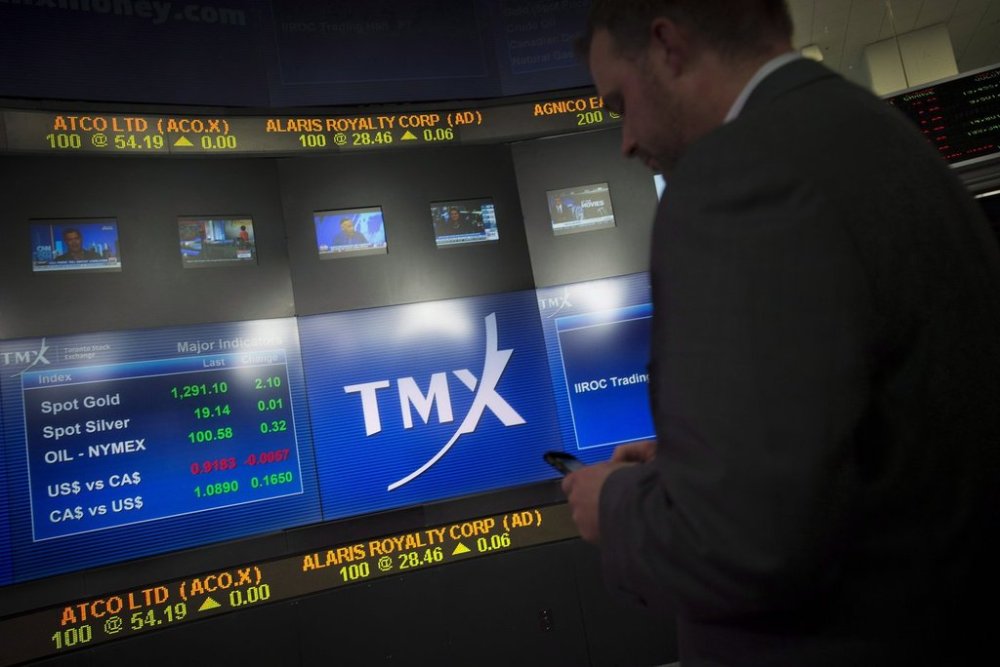S&P/TSX composite falls almost 300 points, U.S. stocks also down amid tariff turmoil
Advertisement
Read this article for free:
or
Already have an account? Log in here »
To continue reading, please subscribe:
Monthly Digital Subscription
$0 for the first 4 weeks*
- Enjoy unlimited reading on winnipegfreepress.com
- Read the E-Edition, our digital replica newspaper
- Access News Break, our award-winning app
- Play interactive puzzles
*No charge for 4 weeks then price increases to the regular rate of $19.00 plus GST every four weeks. Offer available to new and qualified returning subscribers only. Cancel any time.
Monthly Digital Subscription
$4.75/week*
- Enjoy unlimited reading on winnipegfreepress.com
- Read the E-Edition, our digital replica newspaper
- Access News Break, our award-winning app
- Play interactive puzzles
*Billed as $19 plus GST every four weeks. Cancel any time.
To continue reading, please subscribe:
Add Free Press access to your Brandon Sun subscription for only an additional
$1 for the first 4 weeks*
*Your next subscription payment will increase by $1.00 and you will be charged $16.99 plus GST for four weeks. After four weeks, your payment will increase to $23.99 plus GST every four weeks.
Read unlimited articles for free today:
or
Already have an account? Log in here »
Hey there, time traveller!
This article was published 06/03/2025 (265 days ago), so information in it may no longer be current.
TORONTO – Canada’s main stock index fell almost 300 points Thursday, while U.S. stock markets were also down, as the uncertainty around U.S. tariffs on goods from Canada and Mexico mounted.
The S&P/TSX composite index closed down 286.78 points at 24,584.04 as U.S. President Trump paused tariffs on goods compliant with the Canada-U.S.-Mexico Agreement for a month.
The Nasdaq led losses on Wall St., losing 2.6 per cent to end the day 10 per cent below the record it set in December. It was down 483.48 points at 18,069.26.

“At the end of the day, the tech stocks were the crowded trade,” said Greg Taylor, chief investment officer at Purpose Investments, adding investors were “way too exposed” to the sector.
“Now we’re seeing a pretty big sector rotation going on beneath the indices, moving more towards defence,” he said.
Investors had been slowly rotating toward more defensive sectors for months after a couple years of tech-fuelled gains, but the uncertainty sparked by Trump’s tariffs appears to have kicked those moves into high gear, said Taylor.
“It’s really the big risk parts of the market that are taking the biggest hit,” he said, pointing out that areas like telecom and gold were up Thursday.
The Dow Jones industrial average was down 427.51 points, or one per cent, at 42,579.08, while the S&P 500 index was down 104.11 points, or 1.8 per cent, at 5,738.52.
The volatility seen in markets this week is likely the “new normal,” said Taylor.
“I think we’re just going to get used to this as it does seem like that’s the strategy out of Washington, to sort of throw out random headlines and see what sticks.”
Alongside tariffs, moves in the bond market and the currency market were “driving the boat” Thursday, said Taylor.
“Equities are collateral damage,” he said.
Friday will bring new data on both the Canadian and American labour markets. Heading into 2025, the Canadian economy was weaker, prompting more rate cuts north of the border, while the U.S. economy has been surprisingly resilient under higher interest rates.
But in recent weeks, cracks have started to show in some of the U.S. data, said Taylor, and expectations for interest rate cuts this year have crept higher in both the U.S. and Canada.
“I think if these tariff threats do remain for Canada, then we could be looking at a surprise bigger cut from the Bank of Canada next week,” he said.
The Bank of Canada announces its next rate decision March 12.
The Canadian dollar traded for 69.89 cents US compared with 69.59 cents US on Wednesday.
The April crude oil contract was up five cents at US$66.36 per barrel and the April natural gas contract was down 15 cents at US$4.30 per mmBTU.
The April gold contract was up 60 cents at US$2,926.60 an ounce and the May copper contract was up two cents at US4.81 a pound.
— With files from The Associated Press
This report by The Canadian Press was first published March 6, 2025.
Companies in this story: (TSX:GSPTSE, TSX:CADUSD)



